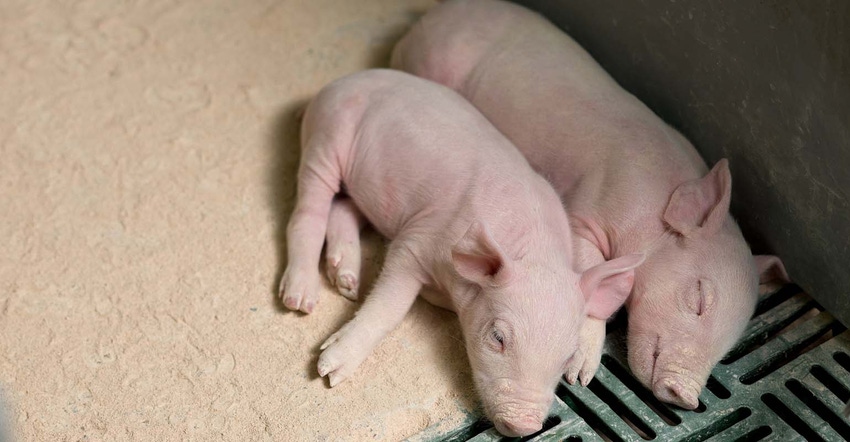
by Jen Skerritt and Jeff Wilson
A surge in cases of a piglet-killing virus in the heart of Canada’s Prairie Provinces is threatening the supply of the animals to the U.S. market.
Fifty cases of porcine epidemic diarrhea virus, or PEDv, have been reported in Manitoba between the start of May and July 4, affecting 63,000 sows at hog operations in the province’s southeast, said Andrew Dickson, general manager of Manitoba Pork, a Winnipeg-based industry group. Some U.S. brokers have already stopped taking deliveries due to the outbreak in the province, which is Canada’s third-largest pork producer.
“We have delayed or canceled shipments from Manitoba in the past two months,” said Jason Mullenhoff, 38, founder and president of Leigh, Nebraska-based Pig Express Inc., one of the largest U.S. brokers of young pigs and which gets as much as 20% of its weekly supply from Canada. “We had to reshuffle a lot of deliveries.”
Older animals can recover from PEDv, which causes vomiting and diarrhea, but the mortality rate is as high as 100% in piglets. An outbreak in the U.S. that peaked in the winter of 2013-2014 killed millions of pigs, sending retail pork prices to a record high.
Canada’s veterinarian inspection service has allowed the continued movement of pigs without the infection south of the border. Still, the latest outbreak may have cut output by 200,000 piglets, and about half that number would have ended up in U.S. barns, Mullenhoff said.
‘Unprecedented’ Surge
U.S. feeder pigs are more expensive as a result, with the average price for a 10-pound to 12-pound piglet at $26.76 in the week of June 30, up 24% from a year earlier, U.S. Department of Agriculture data show. Prices are down 2.3% since the end of April, a seasonally slow period that usually sees a decline, compared with a 44% drop a year earlier.
While it’s too early to assess how many pigs are going to be missing from production due to the virus, the surge in cases is “unprecedented,” with Manitoba reporting a total of 10 cases in three years prior to 2017, Dickson said.
“It’s hard to predict right now because we’ve only been into this for two months and the bulk of cases were probably in the last four weeks,” Dickson said by phone. “I’d be naive to think we’re not going to get some more.”
There could be zero production from affected sows until they begin to cycle again and that could mean more than 154,000 missing pigs as a worst-case scenario, Kevin Grier, an independent livestock-market analyst in Guelph, Ontario, said in a July 3 report. At least 45% of the pigs that aren’t now going into the supply chain would ordinarily have been shipped south as weaners, he said.
“The absence is being felt and both buyers and sellers are making adjustments," Grier said, noting Manitoba sends about 75,000 of the animals south every week. "Some buyers are going short.”
To contact the reporters on this story: Jen Skerritt in Winnipeg at [email protected]; Jeff Wilson in Chicago at [email protected]
To contact the editors responsible for this story: Simon Casey at [email protected]
Steve Stroth
© 2017 Bloomberg L.P
About the Author(s)
You May Also Like




